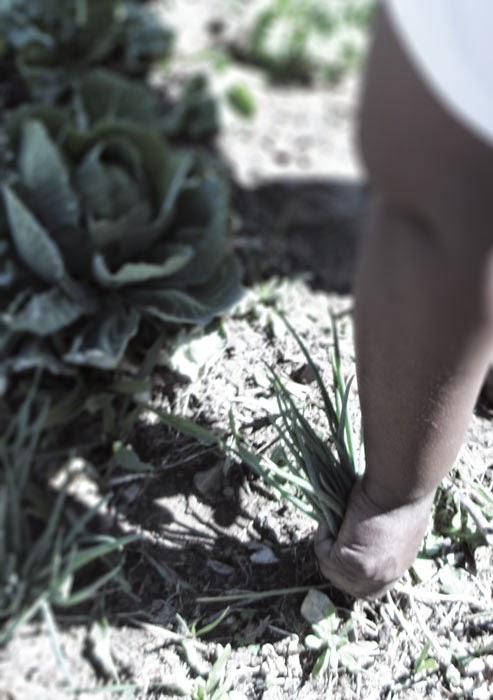My posts are delayed by a week as writing, sketching and prototyping consumed my time... I've got a lot to update so let's get straight to it!
During last week's visit a farmer brought up his concerns regarding his IP and how he will gain from the potential future of the product. This delayed the meeting, but didn't stop the process and his participation... But it's quite important so it's currently being dealt with by the higher powers. The time we had was first spent helping Earl set up the covers for the second seedling bed. After this, the social scientist students took a walk around the farm and other immediate surroundings with Earl to gather some information. I stayed behind to update Mpila and Nkosimaye with the design process based on the feedback they gave me from last week. Jessica was with me to document the process.

After updating the farmers they gave some brief input of opinion and it helped to get points of refinement on the already established direction. The discussion continues to revolve around issues of user interaction during packing, transporting, and displaying.

A basic, scaled down mock-up (right) used PU foam, chipboard, SS wire and rivets to represent the the containers, wheels, trolley framework and trolley attachments respectively. This aided the flow of conversation when the participants and myself were explaining the system to each other. The farmers showed me the 90 litre containers (left) they usually used to transport goods to the market. The also have multi-purposes, one of which is to hold composted soil while filling seedling trays.
At this point I was well enough informed to fabricate the first range of prototypes. These would test the principle of evaporative cooling and the possibility of using the traditional Zeer system (ceramic pot in pot with soil in between). Originally applied to food storage in Nigeria, a current trend involves the revival and transfer of this technology to developed countries and designing it for elitist domestic use. An aim of this project is to revive the traditional method closer to it's place of origin, harnessing the advantages of modern materiality to create a product that is appropriate for small-scale farmers in Soweto! Jomari and I spent an afternoon at the almighty Wespack buying containers and stocking up for the prototyping process. My first prototypes try to mimic the Zeer system using lighter, more durable materials that will aid the transporting of these units. Smaller Tupperware containers were set into bigger ones and lids were cut to fit accordingly. 4 of these were made to be tested with different materials to be placed in between the containers.


Earlier in the day, we were at the first Imvelo farmer's ,market to passively observe and get some contextual information (view next post). I saw my farmers there and they said that they could only meet the following day (wed) to participate on the roll out of the first prototypes. This took one day away from me and I was unable to test the prototypes before the hand over. With this type of research plans made ahead of time are never guaranteed and many things are unpredictable. But the show must go on so... I prototyped at full steam !
The materials were chosen after a simple test was done (top left) to analyse the capillary action of each (showing ability to transfer and hold moisture).
 I'm just going to fast forward through a lot of cutting gluing and drilling of many of holes! I colour coded the rings that were placed on the lids. This helped the testing and recording process later...
I'm just going to fast forward through a lot of cutting gluing and drilling of many of holes! I colour coded the rings that were placed on the lids. This helped the testing and recording process later...
Things sure go fast when you have an awesome workshop, thanks UJ.
Here is the pot in pot plastic replica, times 4! I then went home only to drill more holes.............................................................................................
 |
the fourth test uses soil which works well
in the Zeer but is heavy for transportation. |

Cellulose sponge (left) is a great retainer of water, it is used in mops. It also had the best capillary action results of the pre-pre-tests.
Veldt, (left) had the second best capillary but possibly better insulating properties than cellulose sponge. It's also cheaper than cellulose sponge in the small amounts that I bought both.
Thinsulate (left), used in pillows and duvets and suggested by Angus, has great insulation properties but poor water retention.
Holes shown in the images on the left will encourage evaporation. It will be interesting to compare the results of these materials with different properties.
Ready to take these to the farm! The many holes on the outer containers are meant to replicate the porosity of terracotta used in the Zeer. The theory is that as moisture is suspended in the walls of the two containers, evaporation will be induced because of the warm temperature of the inner pot. As the heat energy is converted into evaporation, the inner pot is left at a lower temperature. The rate of evaporation is directly proportional to the rate of cooling. I would've liked to test it before the field testing but it is important to deliver depending on when the farmers are able to meet.
Participatory design is challenging!...but something is happening :)



















































